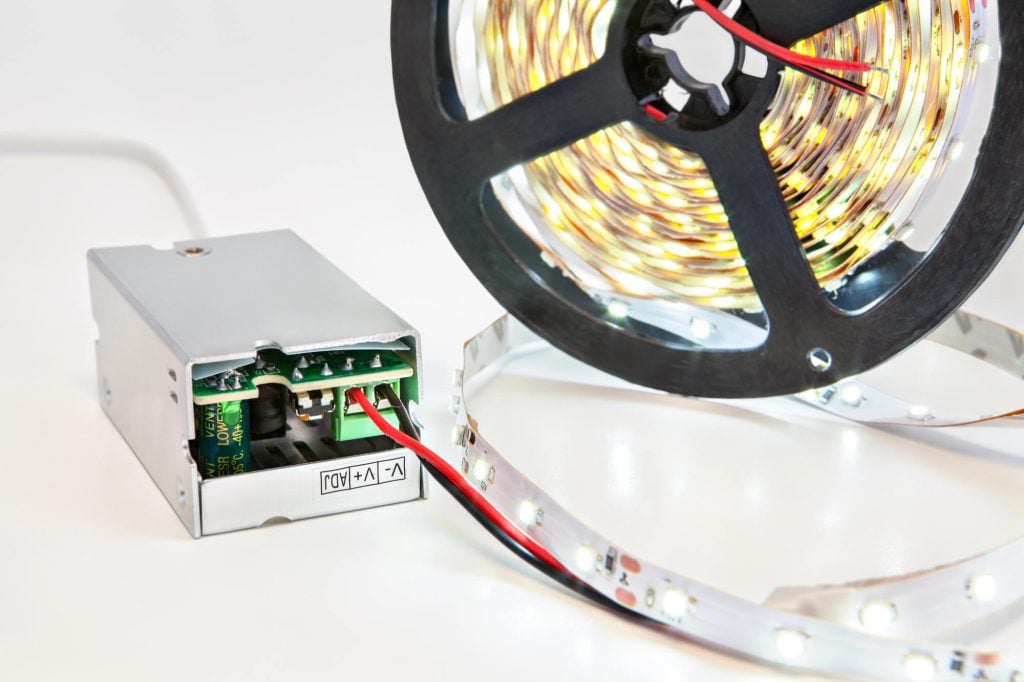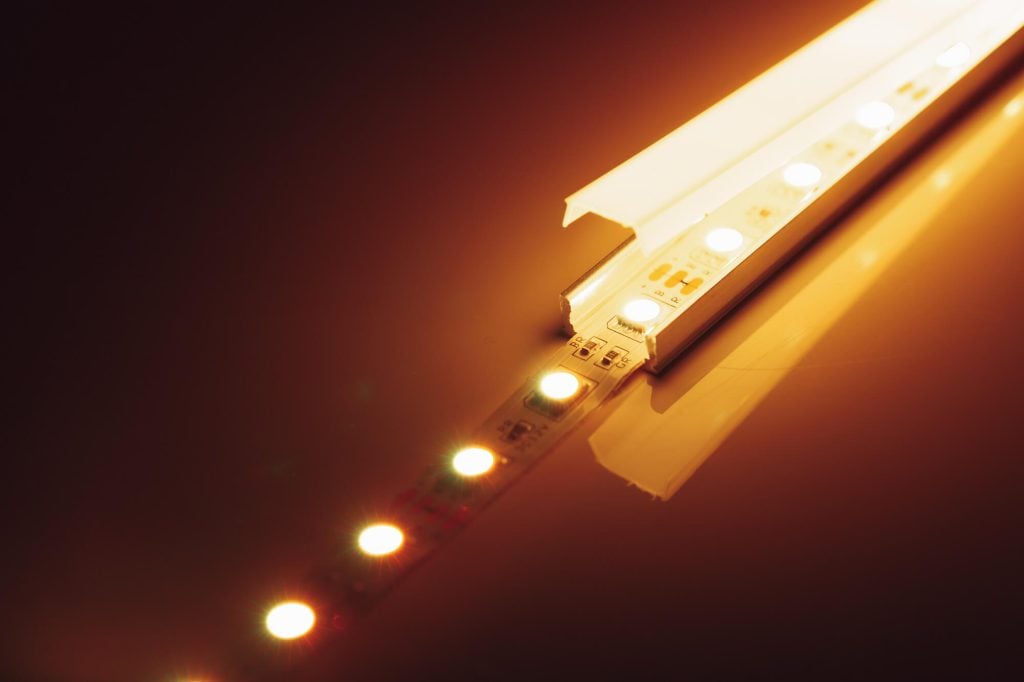Kitchen Sink
Are you wondering what LED Drivers are and why you might need them for all your lighting solutions? That’s completely normal! LED Drivers can be quite useful, but their purpose is not widely known and can sometimes be confusing. Among many things, LED Drivers can help:
- Prevent damage from power surges
- Ensure optimal LED performance
- Provide dimming options
- Enable Outdoor LED Use
Here at LEDSAVE, we’re experts in all things LED-related and we want to help you get the best solution for your home, commercial space or warehouse. Keep reading to learn more about the magic of LED Drivers.
LED Driver Uses and Advantages
LED Drivers can be used for different purposes, and they’re a critical component to ensuring that your LED lights last as long as possible and perform the way they’re supposed to. Here are some of the most important things LED Drivers do.
Power Surge Protection
Power surges can come from anywhere. Maybe there was a blackout near your home, or there was smply an electricity spike out of nowhere. Whatever the case, it is common knowledge that power surges can damage various electronic devices, and LED lights are not the exception.

LED Drivers help ensure that even if there’s a strong voltage variation in your home, your LED lights will get the right amount of electricity, no more, no less. This can help ensure that your LED lights will last as long as possible and meet their lifespan rating.
Power Regulation
This might sound exactly the same as the last point, however it’s completely different, as it has to do with the performance of your LED Lights rather than their lifespan and durability. Just like any other electricity-powered device, LED lights require the right voltage to output the Lumens they’re rated for.
LED Strip Lights, for example, typically come in 12 or 24-volt variations. The higher voltage alternatives are meant for situations when you’ll be running the LED lights through long distances, whereas the lower variants are ideal for shorter runs.
By using an LED Driver, you’ll ensure that your LED lights are always getting the right voltage, thus delivering the right amount of electricity to get their rated Lumens per watts output.
Dimming
This is something that typically gets LED Drivers confused with dimmer switches, as they can both work to adjust the brightness of a specific LED light. However, they are completely different, which is something we’ll touch on further down the article.

An LED Driver that allows for brightness dimming will not only protect your LED lights and ensure they’re getting the right voltage to work properly, but also let you be in control of your spaces.
LED Outdoor Use
LED Drivers are not meant to be submerged underwater or exposed to harsh conditions. However, they can be a great option for situations where you need to have an LED light placed in areas with mild outdoor elements.
This isn’t true for every driver, so before purchasing one for outdoor purposes, you should ensure that it’s properly rated.
Different Types of LED Drivers
Typically, LED Drivers come in two different versions: Constant Current (CC), and Constant Voltage (CV). Constant Current LED Drivers (CC) supply a fixed current and vary the voltage based on the requirements of the LED light you’re trying to power. This type of LED Driver is often paired with LED Downlights.
Constant Voltage LED Drivers, on the other hand, supply a stable voltage output (usually 12 or 24-volts DC). These LED Drivers are most commonly paired with LED Strip Lights, and other lights that can take a fixed DC voltage. This type of LED Driver is often simpler to install than a Constant Current one.
How To Set Up an LED Driver
Setting up an LED Driver isn’t excessively complicated. However, there are some steps that you must follow closely to ensure that you’re safe while doing so and that everything works as it’s supposed to when you’re done.
- First you want to plan your layout. Think where the light is going to be and where your electrical outlet is located. Remember that the LED Driver is the bridge between your outlet and your lights.
- Turn off the mains supply to ensure that you’re not exposed to live wires and electricity, as this can cause serious harm to you and your LED lights.
- Carefully connect the LED Driver’s cables to your LED light and the other end to the wall outlet.
- Once everything’s been set up, restore power to the mains supply and test that your LED Driver is supplying power to your LED lights.
If you’re using an LED Driver for outdoor purposes, you should make sure that the driver is not submerged underwater and that it’s not exposed to a lot of dust, dirt, or humidity.
LED Drivers vs Dimmer Switches
As stated earlier, LED drivers and dimmer switches are often confused with one another. However, there are many things that make them completely different.
For starters, dimmer switches do not convert AC to DC, which LED Drivers do. Also, dimmer switches do not regulate the incoming power supply, they just help you adjust the brightness of your LED lights.
Moreover, most LED lights are compatible with LED Drivers, whereas dimmer switches are restricted to those lights that have dimmable LEDs.
Do You Really Need an LED Driver?
This question is somewhat nuanced, as ”need” is a very strong word. While you don’t need an LED Driver to use many LED lighting solutions, having one installed will ensure that your LED lights last as long as possible, operate in the way they are supposed to, and don’t give you problems along the way.
If you’re looking for an LED Driver for outdoor purposes, make sure that the one you buy is rated to withstand some of the elements it’ll be subjected to. Also, keep an eye out on whether you need a Constant Current, or a Constant Voltage variant, as each one will serve different purposes.
If you have any questions regarding our products, please do not hesitate to email us at enquiries@ledsave.co.uk, or give us a ring at 01652 638840. We’re open Monday–Friday, 9 a.m.–5 p.m. Please check out our contact page for more information.
Publushed at: 28-04-2025
